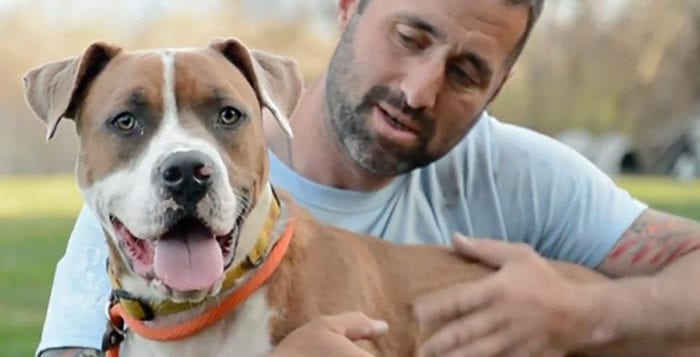Do dogs like to be hugged?

By Matthew Kearns, DVM
I was somewhat taken aback when I saw plastered all over the internet that a hug is stressful to dogs. This hullabaloo came from an article published in Psychology Today. I didn’t have access to the entire article but the author, Stanley Coren, stated that in a review of over 250 images on the internet of dog owners hugging their dogs, he noted signs of stress in four out of five dogs.
Coren is a psychologist and professor emeritus at the University of British Columbia, as well as an award-winning author. He has dedicated his career to researching dog behavior, so I truly believe he knows what he is talking about.
Coren states that dogs are cursorial by nature. What does this mean? It means that dogs have limbs adapted for running and, as much as they will use their teeth to defend themselves if necessary, their first instinct is to flee. When we hug our dogs, what are we doing in their eyes? We are removing that first instinct to flee. This can lead to significant stress, even the potential for the dog’s perceived need to defend themselves.
Now, I know that dogs are social beings and do like contact. However, I do agree that their idea of acceptable contact may not be the same as our own. As much as we see dogs as part of the family, they see us as part of the pack. We may talk to a dog, but a dog will communicate with us as they would other dogs and this communication is mostly through body cues. If these cues are ignored by humans (particularly children who cannot understand the differences between human and canine behavior) or other dogs, the risk of aggression and bodily harm becomes very real.
When we hug our dogs, we are removing their instinct to flee, which can lead to significant stress.
My own dog Jasmine loves to sleep in bed with my son Matthew. However, much to Matty’s chagrin, she will only sleep by his feet. Jasmine will tolerate Matty pulling her up to sleep next to him but always eventually moves back to his feet. If he tries too many times to change her position, she will jump off the bed and find another place to sleep.
Jasmine’s reaction is nonconfrontational, but what if she were not of such a laid back temperament? She would be face to face with my son where he is restraining her movement. Therefore, I think it is important to look for more subtle cues so we can intervene before disaster occurs.
What are cues of stress in dogs? In general terms a relaxed dog will have its ears forward, mouth open and a general look of happiness. A worried dog has its mouth closed, ears back or down, wrinkles around the eyes or forehead and is usually shrinking back.
Beyond these body cues are what are called “stress signals.” Stress signals are signs that a dog is very worried and trying to communicate to others (another dog, a human) that, “I am not a threat.” However, if these stress signals are ignored (by other dogs or children), the dog may feel it has no option other than act aggressively to defend itself.
Stress signals include: a raised paw, yawning (when they are not tired), licking their nose, tail tucked, slouching or slinking, barking and retreating or hiding. If a dog is restrained (hugged) when showing these body signals or cues, things could get out of control quickly.
I hope this article is helpful in not only explaining the differences between how dogs view certain behaviors compared to how we humans view them, as well as signs of stress to avoid conflict. Now go give your dog a . . . scratch behind the ears!
Dr. Kearns practices veterinary medicine from his Port Jefferson office.






